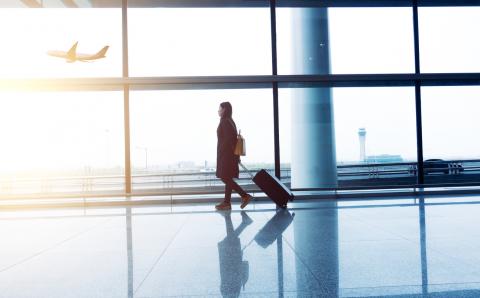Supreme Court’s Initial Decision on Trump Travel Ban: What It Means For Travelers Right Now

On Monday, June 26, 2017, the United States Supreme Court agreed to hear the “travel ban” case in the coming fall term in October. The so-called travel ban arises from the Trump Administration’s March 6, 2017 Executive Order which prohibits the issuance of visas and admission to the United States of nationals from six (6) predominantly Muslim countries as well as halts the entry of refugees from around the world.
While the Supreme Court announced that it will hear the full case in October, in the meantime, it issued a limited order (or decision) which will allow the Administration to ban those nationals from the 6 countries (Iran, Libya, Somalia, Sudan, Syria and Yemen) and refugees who cannot show “a credible claim to a bona fide relationship with a person or entity in the United States.” The actual impact of the Court’s ruling may be quite small as most individuals who seek admission to the United States will be able to demonstrate either a “close familial relationship” or a connection with a U.S. entity (e.g., employer or other institution) that is “formal, documented, and formed in the ordinary course” rather than one made merely to evade the travel ban. For example, individuals who seek reunification with close family will not be banned. Nor will those who are sponsored by U.S. employers, accepted for admission to U.S. schools, or otherwise invited by U.S. institutions. The same requirements will apply to refugees. Thus, only those individuals who lack such a close connection will feel the impact of the travel ban and be prevented from entering the United States, at least until the “travel ban” case is decided on the merits.
The “travel ban” case came to the Supreme Court from two lower federal court rulings (International Refugee Assistance Project v. Trump, and Hawaii v. Trump) which had effectively stopped the Administration from implementing its travel ban while waiting for the lower courts to hear the law suits brought by individuals and the State of Hawaii. Those cases asked the courts to address the question of whether the travel ban violates the U.S. constitution’s First Amendment in that the ban is based primarily on an impermissible religious ground (expressly banning those from predominantly Muslim countries) rather than the Administration’s claim that the ban is intended to protect national security. The lower courts both issued injunctions against the Administration’s implementation of the ban until the courts could hear the cases in full and make decisions. The Administration then sought review before the Supreme Court, asking the Supreme Court to lift these injunctions and to allow the government to ban these individuals now, rather than awaiting lower court decisions on the merits of the cases, a process that would have surely taken many months.
In its ruling of June 26, the Supreme Court agreed to hear the cases on the merits this fall and, in the meantime, lifts the injunctions of the lower courts, allowing the travel ban to go into affect, albeit to a very limited number of individuals who lack those connections to the United States.
In a Department of Homeland Security (DHS) statement released the same afternoon, the DHS stated its view that the Court’s decision “restores to the Executive Branch crucial and long-held constitutional authority to defend our nation’s borders” and announced that further guidance would be forthcoming and with “sufficient public notice.” The DHS statement concerning its intention to provide “clear and sufficient public notice … to affected travelers and … partners in the travel industry” is surely intended to reassure, in particular after the chaos that ensued in late January at airports worldwide among US officials, foreign travelers and airlines when the first travel ban was issued with no notice at all. Presumably the government will provide its interpretation on what kinds of relationships will qualify as sufficiently “close” or “bona fide” and guidance on who will make such decisions at airports and consulates. It is conceivable that many travelers will face delays at consulates and/or airports due to increased questioning about their ties to the United States, as government officials seek to determine whether their ties to family, employers and/or other institutions are sufficiently close to allow them to obtain visas or admission to the United States. Still, there is some reassurance in the limited nature of the Supreme Court’s ruling. As for the full impact, we will need to await the Supreme Court hearing in the fall, and the decision that will follow.
Both the consular officer and the customs agent may question travelers to the U.S. in order assess whether the modified ban applies to them, or whether they are eligible for the exception established by the Supreme Court based upon bona fide relationships to U.S. institutions and individuals. For this reason, citizens of the six affected countries who intend to apply for visas at U.S. consulates and/or who intend to travel to the U.S. should be prepared to provide evidence of their existing relationships to U.S. citizens, employers and other institutions. Speaking with an immigration attorney may be advised as well prior to any such travel.
